Why did our 2020 Plot Fail?
We analyze our 2020 Ohio plot and started over for 2021

I’ve been planting food plots for 25 years and the only thing that I can guarantee is that sometimes I get it right, and sometimes I get it wrong. Food plots fail, and they may not always improve the property. Learning from the failures is more important than learning from the success. And since my goal is not to be a paid habitat consultant, I have no problem talking about our fails.
2020 was my first year owning my Ohio property. I had no idea what to expect. I spent days laying out a design on HuntStand and then applied that design in the field. Let’s review last year’s design.
I had 30 acres of fields to work with. My big 14-acre field that consisted of all ag soybeans with Sunn Hemp and Egyptian wheat for screening. East of that plot was my 6-acre kill plot and once again - all soybeans. My interior fields were planted in perennial clovers and chicory. And as an afterthought I planted my 2-acre southern field with a fall annual brassica blend.
I should point out that while baiting is legal in Ohio, I chose not to include baiting in my strategy.
So what worked and what didn’t work?
So what worked, and didn't work in 2020?
My big soybean field came up fantastic and drew deer immediately. Unfortunately, my screening was a total fail. The deer ate the Sunn Hemp, and my Egyptian Wheat was planted too late to grow to maturity. Bowhunting that big field was very difficult. I tried to use existing cover to access my stands but I bumped deer often, and that created a lot of human pressure. I eventually hunted the big field stands.
There was more activity on the neighbor’s field than I had anticipated. That didn’t help. That field bordered my big bean field with nothing more than a 20’ of tree belt separating our two fields. Between my pressure, their pressure, and no security buffer, the mature bucks went nocturnal shortly after the season opened and eventually left the area.
On my 6-acre kill plot, the deer felt more comfortable. Unfortunately, my design made it nearly impossible to get a bow-shot at one of several mature bucks using that field. Even killing a doe was hard. I assumed the tree-belts would be used as corridors (just like we experience in Kansas) but that rarely happened on my Ohio farm. The deer were impossible to pattern and liked to walk in the open as they entered the bean field. If I was a rifle hunter it would have been a slam-dunk.
My southern plot (which was planted as an afterthought) turned out to be the hot spot with lots of close encounters and nonstop action. I had several bucks in range including a couple of really good 8’s (that I passed up). I didn’t expect that.
Finally, my interior perennial plots came up well and worked as expected - providing diversity and nutrition. I never intended to hunt those fields.
Our 2021 Design looks much different
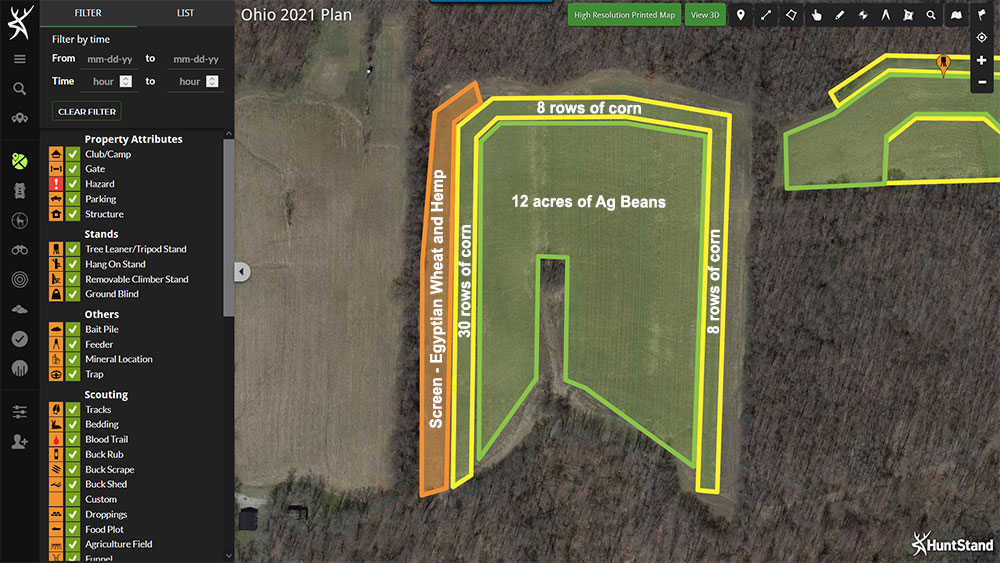
Big Plot
I learned from my 2020 mistakes so for this season I had to do some things differently. I spent hours designing on HuntStand for my big 14-acre field.
The priority was to improve security in my big field. I decided not to hunt my big field stands at all for the ’21 season. That would help to keep my pressure off of the field. But I still had pressure generated from my neighbor’s property. My best option was to create a living buffer along that border. I went with 10 feet of Egyptian Wheat, 10 feet of Sunn Hemp, and 30 rows of field corn right up against the adjacent tree belt. I also wrapped 8 rows of corn around the entire 14-acre perimeter. This planting added 3 acres of corn, and 1 acre of screening, with the balance in ag beans.
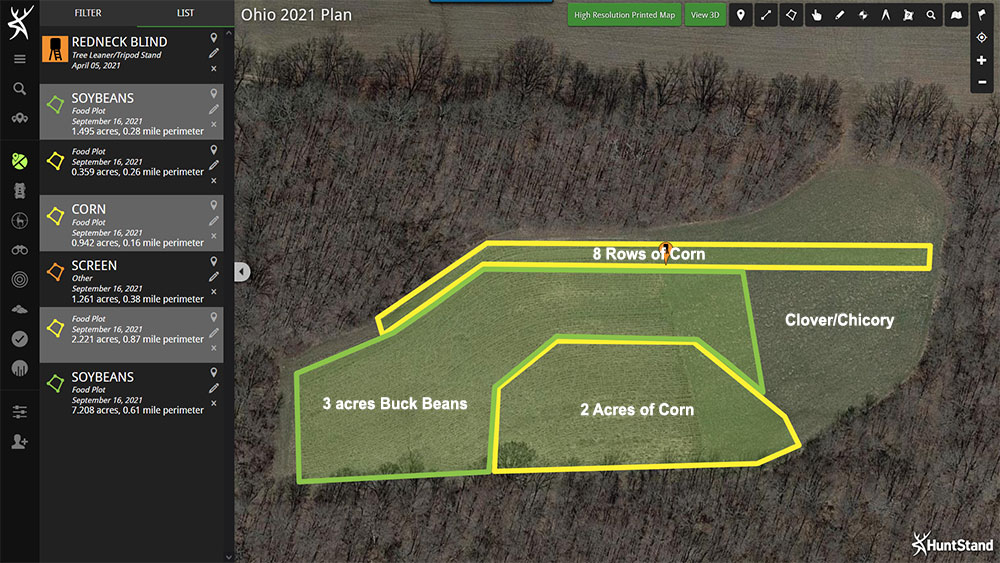
Kill Plot
With that design finished, I started working on my 6-acre kill plot. I decided to create a living funnel using corn and beans. I placed a Redneck blind into this plot and then wrapped the entire field in corn with the interior planted in soybeans. The intent was to create a natural corridor for the deer to direct them within range of that blind. I broadcasted brassicas between the rows for diversity.
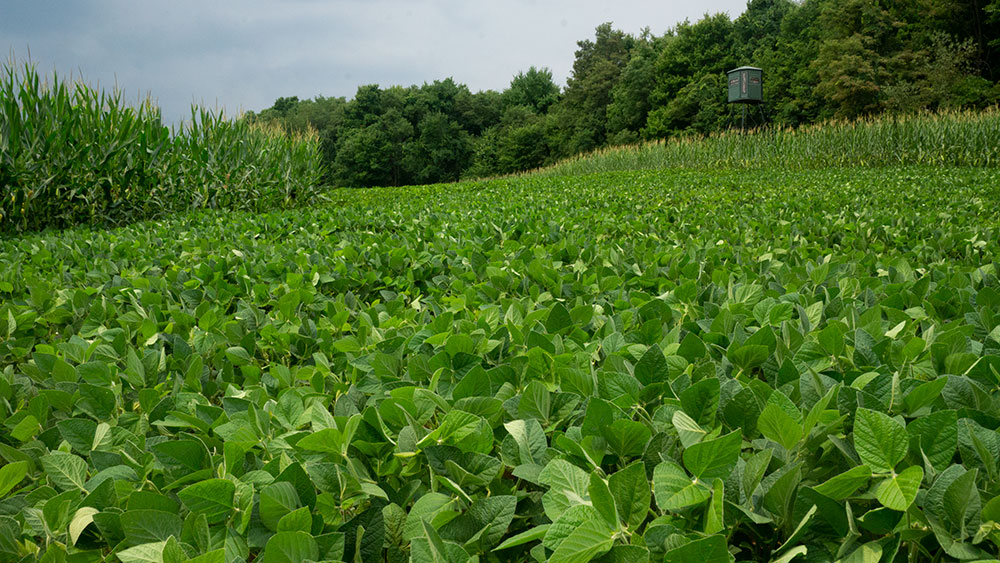
Other Plots
We have three more plots that remained unchanged. Our interior, perennial plots came up outstanding and needed nothing other than maintenance of spraying and clipping. My South 2-acre kill plot was planted again with Hancock Fall blend. It worked so well last year that I made no changes there in 2021.
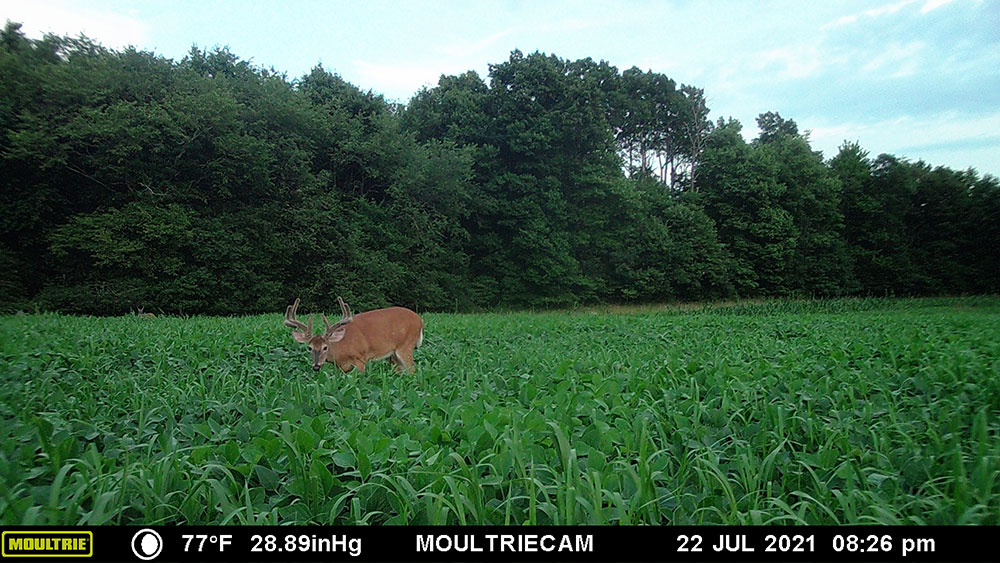
Summary
These designs are a bit more complicated to plant, but If you map everything out with HuntStand first, then you can use a combination of your phone app, and small landscaping flags to keep your planting on track. It sounds harder than it is.
It’s now September and these plots look terrific. Despite some early browse damage to the corn, overall things look great. We are also drawing some nice bucks already.
I always say it takes me at least 3-4 years to learn a new property. I am confident this new design will improve the overall hunting here, but if it doesn’t work, I’ll try something different next year. For me, designing, planting, and seeing your strategy come to life is just as much fun as hunting it.
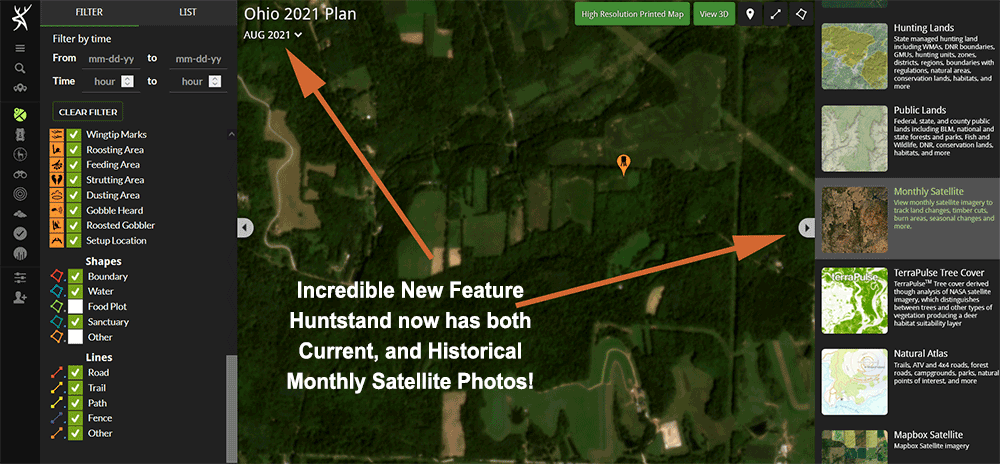
Check it out Here
